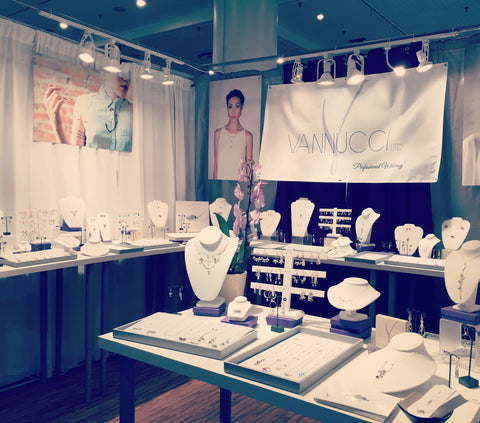Why does handcrafted and artisan jewelry cost so much?!
I’m sure you’ve asked yourself this question before. You spot a stunning necklace in your favorite shop while wandering around with your beau after brunch one Sunday. I mean, brunch wasn’t that expensive you start to reason with yourself as you finger that lovely necklace tucked away in a corner case, I haven’t really bought something for myself in… a week… well… If it’s under $50 I’ll go for it! All this goes through your mind, and you don’t really even expect the piece to cost that much, you’re just making sure you give yourself enough room in case it’s a little more than you thought. You check the price tag. $117 stares you back in the face. Anger starts to creep it. Are you kidding me?! I could probably make this. Or find it at Target for a quarter of the price. Why the HELL does this necklace cost this much?!
I’m going to tell you.
We can break our price down into four categories:
1) Supplies
2) Overhead
3) Time
4) Profit
SUPPLIES
Let’s start with the most obvious contributor to price, the supplies you use to create your design. I’m going to use the above photo as my example piece for this article (I love examples). So, first off I have to have the tools to manipulate the supplies I’m going to use to create the necklace. I’ll need a set of mandrels to wrap the wire around to make those circles, wire cutters to cut the shapes, files to file the cut edges and then solder to connect them. I’ll need a torch setup as well as a tank of oxygen and acetylene to actually solder. I also need the solution that the metal is submersed into after soldering, as well as containers for the solutions and a block/tongs/pick to hold the circle while I solder it.


Now we want to make the interlocking circles oxidized. I need Liver of Sulfur for that and another container. Next, the piece takes a ride in a tumbler with ceramic shot first, and then steel shot (different sized pellets that constantly strike the metal as the tumbler spins creating a high shine finish) and the solution. After I remove the metalwork, it’s time to attach the gemstones (always my favorite part)! The gemstones come in long strands like these:
On one hand, this is awesome, because I can buy more stones for a lower price (aka wholesale). However, sometimes it’s hard to determine how a new piece will do, and you can end up getting way more than you need. Or, you’re out of stock of a gemstone and you just get ONE ORDER for a necklace using that stone so you must buy a whole strand.
After the gemstones come the chain, then the clasp, which we hand craft from wire.
To sum up, for just THIS NECKLACE, we need:
Wire cutters
Needle nose pliers
Flat nose pliers
Oxygen/acetylene
Torch/torch gauge
Charcoal block/tongs/pick
Solder
Silver wire
Gold wire
Silver chain
Four types of gemstones
Liver of Sulfer
A tumbler/ceramic shot/steel shot/tumbler solution
A table/lamp
Pickle (the solution the metalwork goes in after soldering)
Files
Maybe this part you knew. Maybe even knowing all the tools and supplies required you are still miffed. I get it. But perhaps you forget the most overlooked expenses of a craft or artisan business.
2) OVERHEAD
Overhead is anything you pay that contributes to your business but that is not directly involved in the making of the product. For my business this includes everything from my business cards to my printer ink. From the rent I pay for my studio to the water I just used in that tumbler. I also need packaging like earring/necklace cards and mailing envelopes. A laptop is needed to write my invoices on, list items, and answer emails. A camera or phone to take pictures for my website. I’ll also need to pay to host my website, to take credit cards, or to compensate my sales reps.
Trade shows and festivals cost money to attend (often in the thousands), and I’ll need all the jewelry display items along with tables, a sign, and a tent. Some shows I provide my own flooring and lighting!
Don’t forget marketing! People have to know I exist to make orders! Getting my jewelry in front of the correct audience is a balance of money and time.
3) Time
We have arrived at our last category… time. Time is hard because you need to basically set your own wage. How much is my time worth? I have to think about all the time and resources I consumed while going to school for four years to learn many of the skills I use in designing my jewelry. I’ll want to consider how many years I’ve been in the industry and of my skill level. I’m not going to set an entry level wage because I have many years of experience in my craft. When you purchase this necklace, you’re paying for a discerning eye when it comes to color combinations, for days spent designing new pieces, for a level of quality and craftsmanship you won’t get with a machine or assembly line. For months of research to figure out how to get the jewelry in front of the purchaser. The thought and preparation that goes into making this necklace before a tool is even picked up, is what makes this piece worth more than others. There is care given to each detail, a story behind how it was conceived and then translated into metal. There is love woven in with each wire wrap. “Telling me my jewelry is too expensive is like me walking into your job and telling your boss you’re overpaid,” a fellow blogger writes.
Our sample piece takes me about 35 minutes to make. If it’s new, then there’s time spent photographing it, touching it up, and then listing it. If it’s for an order, then there’s the time spent typing up the order, packing the piece, and then the trip to the post office to send it out.
4) PROFIT
I was nervous, and I almost didn’t include this as its own specific category, but it’s a very important one. Consumers hear profit, and balk, like it’s a dirty word. But here’s the thing: Businesses that don’t profit go OUT OF BUSINESS. The profit isn’t necessarily extra money that I get to take home at the end of the month, remember, I’ve already worked an hourly wage into my item price. The profit goes to growth, to expansion, to give my product a greater reach. It could be used to take classes to improve quality control or learn a new technique to make the next collection even more appealing. It could go towards introducing different gemstones to create new color combinations and styles. All of these, in the end, benefit YOU, the consumer!

So, what do you think? Does that make you a little less angry at that price tag? As you are standing in the corner of the store deciding if this piece is worth it, your finger finds the texture of the metal. You know that each of those dents is an individual hammer mark where a REAL person swung a hammer countless times to make each indent. You see the gemstones, and recognize that a single stone of perfect size and quality for this piece was plucked from a larger strand. Your eyes travel over the interlocking hoops, and you picture the spool of wire it came from, coiled, waiting patiently to be shaped into a desirable shape. You know all this, and you just can’t believe the price is ONLY that much.
Please feel free to share your thoughts about this!







